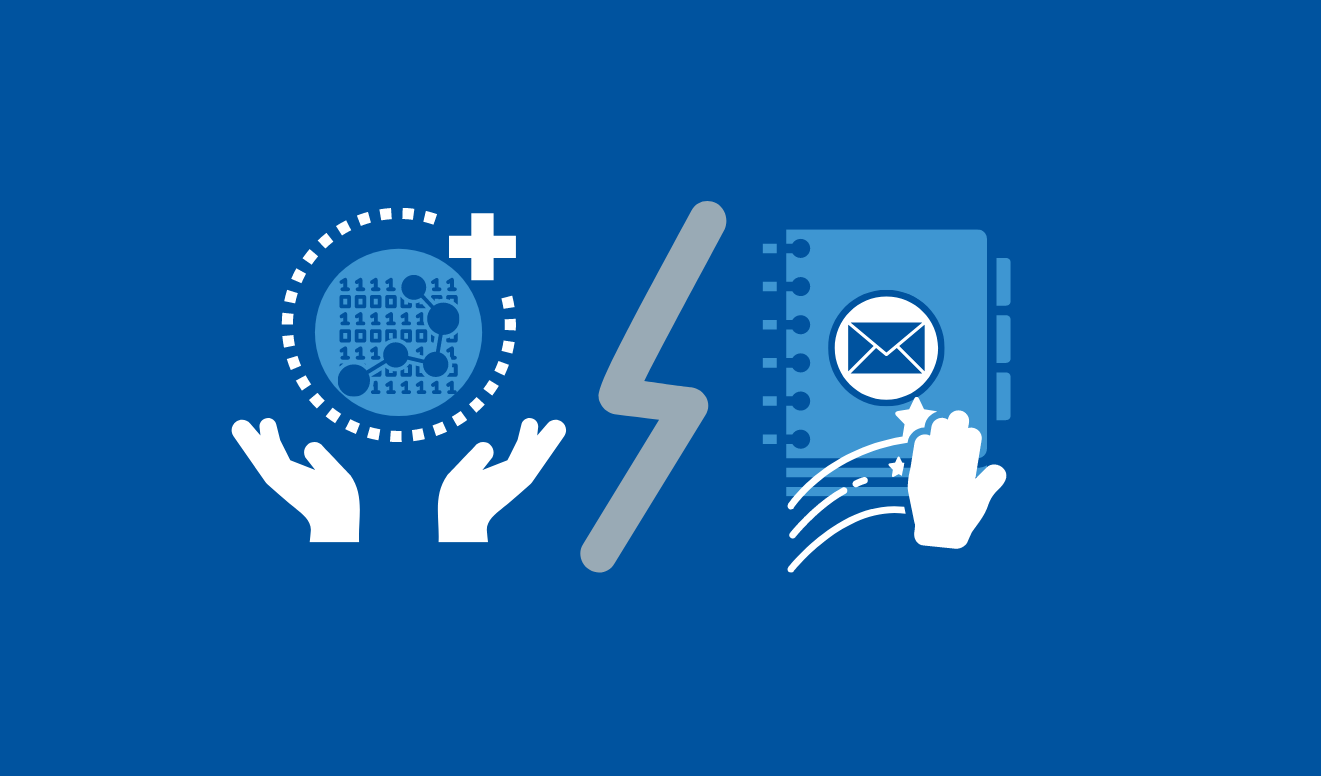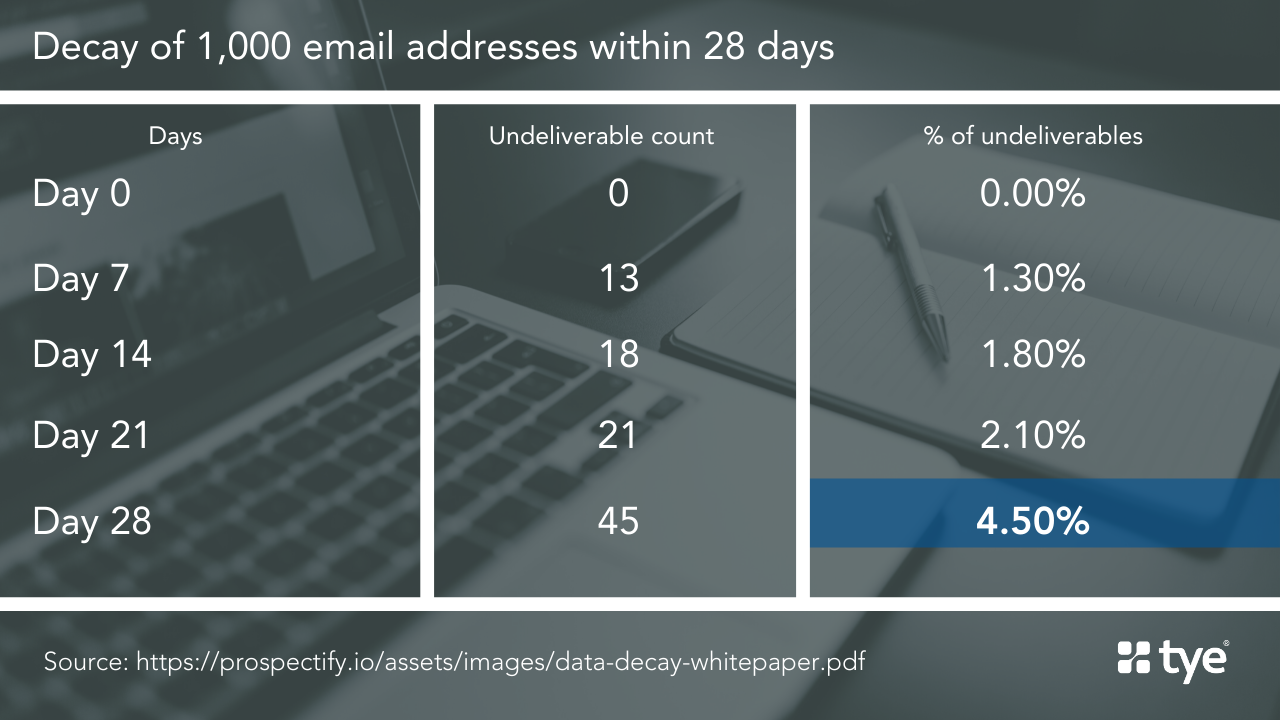Data Enrichment vs Data Cleansing: Everything You Need to Know

If you're email-marketing-curious, but haven't been able to get started because your data is just bad, you aren't alone. Too many businesses today suffer from bad data:
- You've got a list of emails, but you don't have any first names
- You have some name fields, sometimes the first name and last names are switched
- You don't know who's a customer or who's a lead
- You want to try marketing automation but you're paralyzed by the state of your data
Without a clean database, you can’t personalize marketing or customer support, and you may end up wasting time and resources communicating with outdated or poorly aligned contacts.
A study by Deloitte revealed that 71% of participants who were shown their own data said that it was only 0 to 50% accurate.
Data cleansing and data enrichment can help you turn your database into a powerful sales and marketing tool. In this post, we’ll explain:
- The simple way to normalize and cleanse your data (without doing it manually)
- How you can get more from your data (names, genders and locations from email addresses, without manual labor and without violating data privacy)
- What the difference between data cleansing and data enrichment is, and how to add both to your data quality plan
- Best practices for making data quality an accepted and easy part of your company workflow
- What tools are best for your data, based on your needs and company size
Want to know the state of your data? Get in touch with us for a free data quality check.
Clean your email list with this 15-point email hygiene checklist
What is data cleansing?
The goal of data cleansing is to make your contact database valid and accurate. Inaccurate data can lead to time wasted chasing contacts that aren’t relevant to your business, and can even jeopardize your email marketing as sending to too many incorrect email addresses can affect your sender reputation.
This is why data cleaning is an essential step for marketers. The process of data cleansing involves looking at the prospect or customer data you already have, correcting mistakes, and validating the information that’s there. It allows you to fix incorrect or misplaced data and spot any gaps.
The result is a database that’s consistent and predictable, with information in the correct fields.
The important thing is to ensure you have a good understanding of your data before you undertake data cleansing. Knowing how your fields are being used, how your data is collected and entered, and how the types of data relate to each other can help you resolve issues with duplicate fields and arbitrary entries.
Check out our post on email hygiene best practices and how to get your list sparkling clean.
What is data enrichment?
Data enrichment is the process of adding external data from third-party data sources and adding it to your existing database. The goal is to get further insights from your data to improve your marketing or sales approach. Sometimes you can get the information from databases—the more data you have, the more you can understand patterns and extract information like first names and genders.
Other times you can get this data from scraping company websites and platforms like LinkedIn.
The data enrichment process improves on the data you already have. This process, sometimes referred to as ‘appending’, enables you to fill in gaps in your database, such as gender, company, age, and so on.
Data enrichment vs data cleansing

Data cleansing processes all take place within your existing database. It’s about fixing what’s already there, tidying it up, and optimizing it for use. Data enrichment is about looking at what’s in your database, finding the gaps, and adding information.
Both data cleansing and data enrichment processes are key to keeping a healthy database that will give you best results. First, ensure your data is accurate, then use data appending to enhance your contact list. The result? A far more powerful list to empower your sales and marketing teams.
How often should you clean and enrich your data?
Cleaning and enriching data are not one-off tasks. Data decays and becomes unusable, which means constant cleaning is important. Hopefully, you are collecting new contacts all the time, too, which means there is always new information to be added to your database.
Depending on your customer lifecycle, you could end up with a decay rate of almost 5% each month.

Data integrity should be a priority for sales and marketing teams, so you should clean and enrich your data throughout the year so that you’re armed with a healthy database. The frequency depends on a typical customer lifecycle, and how big your email database is.
We wrote a related post on how to enrich your data while staying GDPR compliant.
Mistakes to avoid in data management
Not cleansing your data regularly
As mentioned, committing to frequent data cleansing is important to ensure best results for your sales and marketing teams. Without regular data cleaning you could risk poor email metrics, a low email sender reputation, and time and resource wasted chasing uninterested or non-existent contacts.
Siloing your data into various databases
Keeping data across multiple databases causes confusion, duplication, and makes it difficult for your sales and marketing teams to create clear and time-effective processes. Instead, consolidate your databases and use data management tools to merge and clean your data.
Not having clear processes
Without a standard way of creating new contact records, or ways to update your databases, you can end up with inconsistent, duplicated, and even incorrect data. An example of this is when people want to add notes to a contact record, often they will create a new field. When this isn’t consistent, you can end up with your number of fields running into the hundreds, making it very difficult to manage.
Common consequences of poor customer #datamanagement: 1. Plummeting email deliverability 2. Siloed data & inconsistent contact records3. Poor communication between sales and marketing teams
Tactics for overcoming these here:
Data enrichment vs data cleansing tools
When it comes to data enrichment and data cleansing, it can make sense to use a tool, rather than attempting it in-house.
We’ve estimated that it takes a human about 3-5 minutes to clean one data point, meaning that it could take days or weeks to complete a data cleaning exercise depending on the size of your database.
Best data cleansing tools
DataValidation
Bounceless
Kickbox
tye
DataValidation is an email verification and email list cleaning service. You import your lists to their online tool, and they provide an email verification report, highlighting issues you need to resolve. It’s best for larger companies managing their email contact lists.
Neverbounce analyzes your email list quality and labels them as “valid”, “accept all”, “unknown” and “invalid”. Then, you can remove all “unknown” and “invalid” emails for your list. This is a great tool if the only thing you need cleaned is an email list.
Kickbox is an email verification tool that allows you to eliminate bounces and monitor your sender reputation in real-time. They are also hot on GDPR if you are concerned about emailing European contacts. Best for marketers and developers in small to medium-sized companies
tye.io
tye both cleans your data and enriches it. We remove invalid or inaccurate email addresses from your database and then combine databases and machine learning to add detail to your database.
Best data enrichment tools
- RingLead
- ZoomInfo
- Snov.io
- tye
RingLead is an end-to-end data enrichment solution that specializes in Salesforce management.
They can help with duplicate management, which usually occurs after large scale Salesforce merges. Best for Medium to Enterprise-sized businesses who need to clean their Salesforce data.
Zoominfo is a B2B database management tool that helps you identify ideal clients, enrich your data, and manage your pipelines. Useful for prospecting, demand generation, and data management. It works best for Medium to Enterprise-sized businesses with larger lists (50k+ contacts) who want to overhaul their contact management approach.
Snov.io is an email marketing ‘toolbox’. It provides tools to help with lead generation, competitor research, re-engagement, and email verification. Ideal for SMBs with contact lists of any size who want to send better bulk emails.
tye.io
tye both cleans your data and enriches it. We remove invalid or inaccurate email addresses from your database and then combine databases and machine learning to add detail to your database.
Don't miss our post where we compare the leading data cleaning software Ringlead vs. tye vs. Cloudingo and look at the primary features of each one.
A tool that does both?
tye.io
tye both cleans your data and enriches it. We remove invalid or inaccurate email addresses from your database and then combine databases and machine learning to add detail to your database.
We have 4 key principles when it comes to improving your data:
- Personalization. Most of our clients come to us with a goal to send more personalized email marketing campaigns. We help get your data ready so you can achieve this.
- Enrichment. We fill in the gaps, so your data is detailed.
- Accuracy. We ensure your data is consistent, correct, and the right information is in the right field.
- Unification. We provide you with a unified view of your email lists, merging all lists for a single, unified view.
You don't need to train your staff or change systems. It’s as simple as extracting your data and then getting it back clean and enriched.
We understand the importance of high-quality data. We’d love to help you improve the quality of your lists so you can reach the full potential of your database.
Want to know the state of your data? Get in touch with us for a free data quality check.
Clean your email list with this 15-point email hygiene checklist